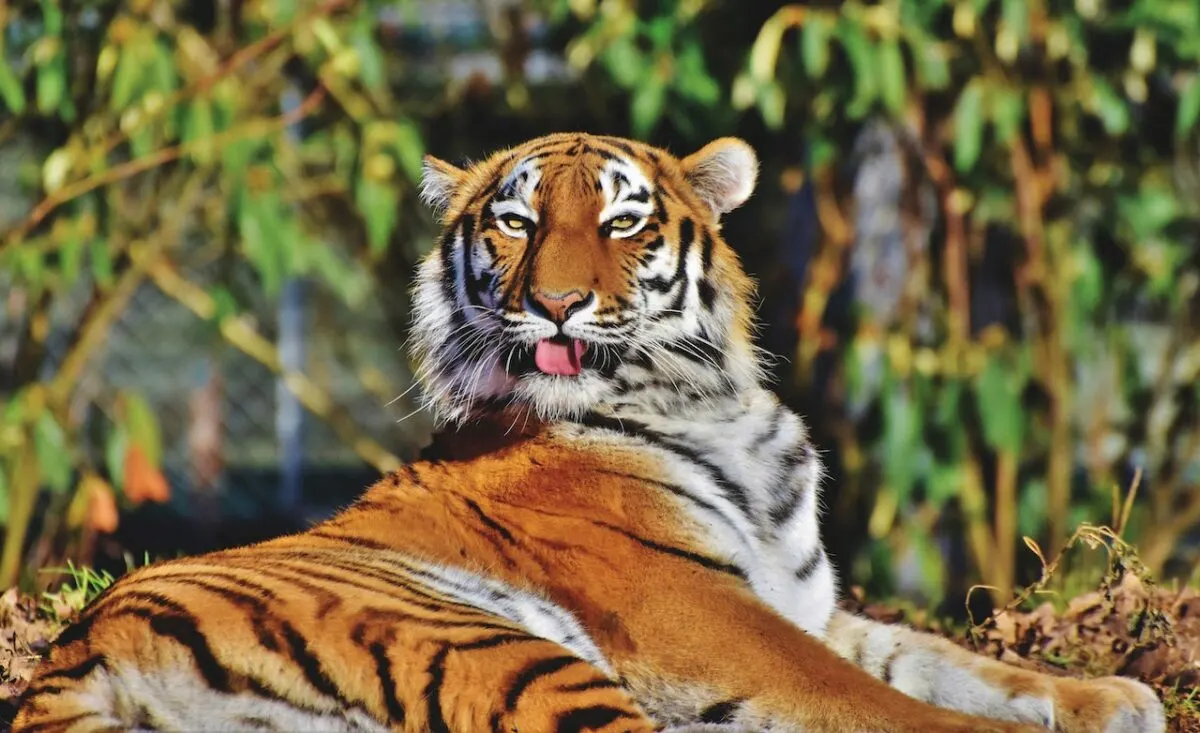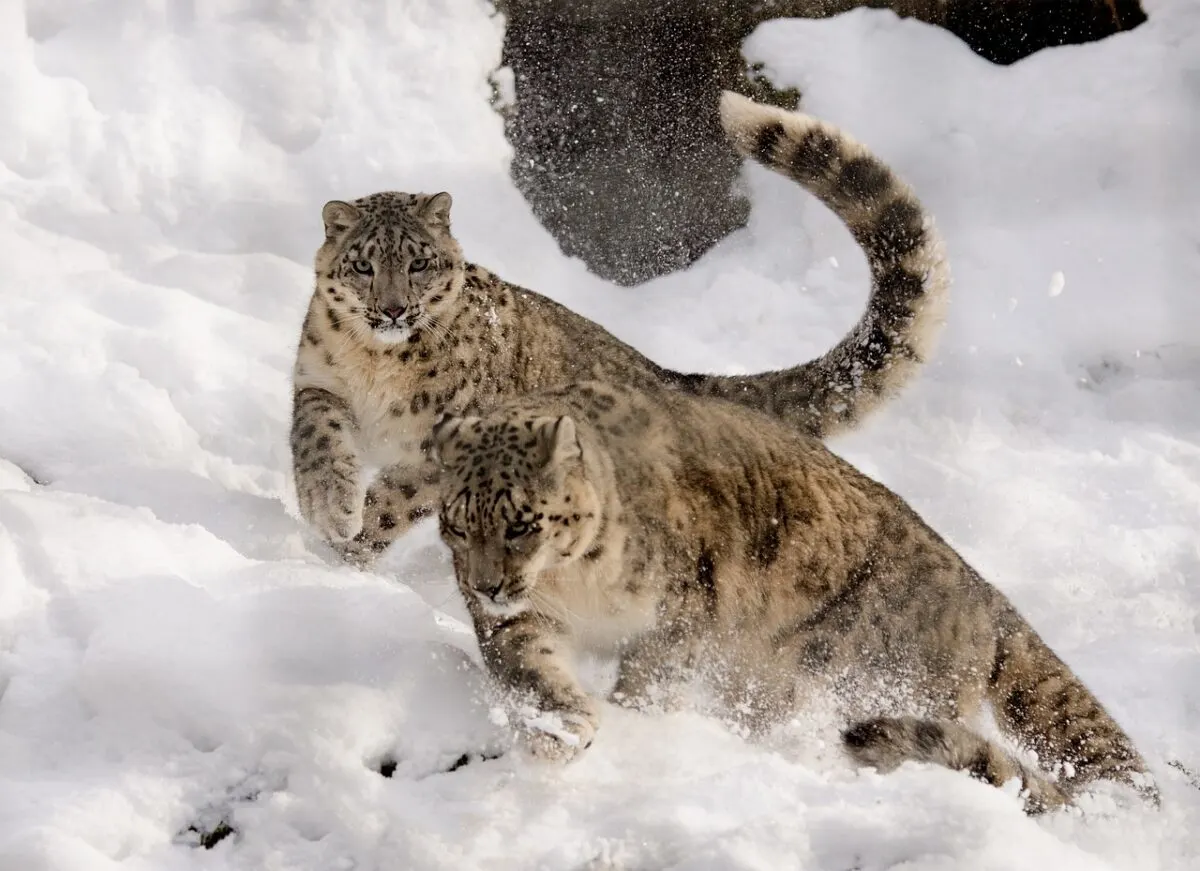Siberian Tiger vs Snow Leopard: A Clash of Titans in the Frozen Wilds

For centuries, people have been fascinated by the clash between two majestic creatures of the frozen wilds – the Siberian Tiger and Snow Leopard. These giant apex predators inhabit Asia’s vast snowfields and alpine regions and have long been admired for their bravery, strength, and beauty. However, there is a lingering question about which of these animals is the most powerful. In this article, we will explore how these magnificent beasts have evolved to survive in their harsh climates and compare the differences that make them unique, from size to hunting strategy to diet preferences. If you’re curious to know more, click on the table of contents below.
Comparison of Siberian Tiger and Snow Leopard – Size, Habitat, Diet

The Siberian tiger and snow leopard are two fascinating big cats that inhabit the cold landscapes of Asia.
The Siberian tiger is the largest member of the cat family, weighing up to 600 pounds. They live in the forests and taiga of Siberia, Russia, and primarily hunt elk, wild boar, and deer.
On the other hand, the snow leopard is a sleek, spotted feline that can blend into its surroundings. They weigh up to 55 kg and live in mountainous regions of Central and South Asia, including the Himalayas. Snow leopards primarily hunt blue sheep and ibex and can be found in rocky mountainous regions as well as coniferous forests. Both species are facing population declines and are listed as Critically Endangered and Vulnerable, respectively.
Heading: Magnificent Siberian Tiger and Snow Leopard – Vital to Ecosystem
The Siberian tiger and snow leopard, despite their contrasting sizes and habitats, are both stunning animals that play a crucial role in maintaining the ecosystem.
The physical attributes of the Siberian Tiger and Snow Leopard differ, despite their shared habitat and diet. The Siberian Tiger has orange-brown fur with black stripes, while the Snow Leopard has white or grayish fur with black spots and rosettes. The Siberian Tiger has a muscular build and large head with white spots on the back of their ears, whereas the Snow Leopard has a stocky build and thick fur to adapt to their mountainous environment. Although both are dominant predators, their distinct appearances set them apart.
Distinct Hunting Behaviors and Tactics of Siberian Tiger and Snow Leopard

The impressive Siberian Tiger and Snow Leopard are both skilled predators with unique hunting behaviors and tactics.
Siberian Tigers, the largest cats in the world, use their sharp senses to stealthily stalk prey and launch a surprise attack. They are known for their incredible strength when taking down larger animals like elk and wild pigs.
In contrast, Snow Leopards are expert climbers and can overpower prey twice their size with their powerful jaws and sharp teeth. They ambush and pounce on prey with precision, often taking them down in a single leap.
Although these big cats have some similar hunting styles, they possess distinct techniques for capturing prey that distinguish them from each other.
Comparing Social Structures of Siberian Tigers and Snow Leopards
The social structures of Siberian Tigers and Snow Leopards exhibit noticeable differences. The former live in small groups consisting of a mother and her cubs, while the latter have solitary lives and only mate on occasions.
However, despite these variations, both species play significant roles in their respective ecosystems. Siberian Tigers are apex predators that regulate populations of herbivorous prey, whereas Snow Leopards hunt small mammals and ungulates to keep their populations under control.
So, even though they have distinct social tendencies, both the Siberian Tiger and Snow Leopard contribute importantly to maintaining ecological equilibrium.
Contrasting Reproduction Rates and Population Sizes

The Siberian Tiger and Snow Leopard are two magnificent big cats, but they differ greatly in their population sizes and reproduction rates.
Despite both being considered endangered species, the Siberian Tiger has a larger population than the Snow Leopard because it can have up to six cubs per litter, while the Snow Leopard typically only has up to two.
Furthermore, habitat loss and difficulty finding mates have led to a lower reproduction rate for Snow Leopards. These contrasts highlight the need for conservation efforts to safeguard these beautiful animals and their habitats.
Surviving in Challenging Environments: Adaptation Strategies of Siberian Tigers and Snow Leopards

Siberian tigers and snow leopards inhabit harsh environments where food is scarce, and temperatures can reach extreme lows. However, both species have evolved unique strategies to survive in their native habitats. For instance, Siberian tigers rely on their agility and senses to hunt prey, while snow leopards have furry paws that serve as natural snowshoes and provide camouflage. These adaptations help the big cats blend with their surroundings, making them formidable predators and survivors in challenging environments.
Main Takeaways
Siberian Tiger vs. Snow Leopard
The Siberian Tiger and Snow Leopard are two distinct big cats that differ in size, appearance, hunting styles, and population sizes. While the Siberian Tiger is larger and typically lives in small family groups, the Snow Leopard is a solitary expert climber with powerful jaws and sharp teeth. Both animals have adapted to survive in harsh environments where food is scarce, but human activities such as poaching threaten their existence.
It is crucial for us to take measures to protect these remarkable creatures for future generations to appreciate. By supporting global conservation groups like WWF and IUCN, along with education and protection laws, we can help save these magnificent creatures from extinction and guarantee their continuous presence in the wild.